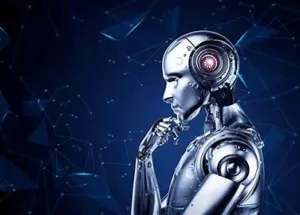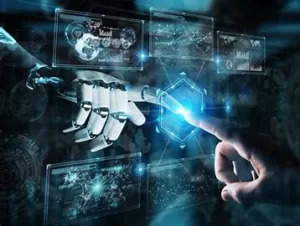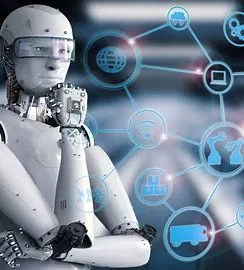Exploring the Impact of AI on the Future of Architecture
The impact of artificial intelligence (AI) on the future of architecture is an increasingly important topic of discussion. AI has the potential to revolutionize the way architects design and construct buildings, as well as the way people interact with them. AI can be used to automate mundane tasks, such as drawing plans and creating 3D models, freeing up architects to focus on more creative aspects of their work. AI can also be used to analyze data and generate insights that can help architects make better decisions.
AI can be used to create more efficient and sustainable buildings. AI-driven algorithms can be used to optimize the design of a building, taking into account factors such as energy efficiency, cost, and environmental impact. AI can also be used to monitor the performance of a building over time, allowing architects to make adjustments as needed. This could lead to buildings that are more energy-efficient and better suited to their environment.
AI can also be used to create more interactive and engaging buildings. AI-driven algorithms can be used to create interactive experiences within a building, such as interactive displays or virtual reality experiences. This could lead to buildings that are more engaging and enjoyable for occupants.
Finally, AI can be used to create more personalized buildings. AI-driven algorithms can be used to analyze data about a building’s occupants and create personalized experiences tailored to their needs. This could lead to buildings that are more comfortable and enjoyable for occupants.
In conclusion, AI has the potential to revolutionize the way architects design and construct buildings, as well as the way people interact with them. AI can be used to create more efficient and sustainable buildings, more interactive and engaging buildings, and more personalized buildings. As AI technology continues to develop, it is likely that the impact of AI on the future of architecture will only become more pronounced.
How AI is Changing the Way Architects Design Buildings
The use of artificial intelligence (AI) in architecture is revolutionizing the way buildings are designed. AI is enabling architects to create more efficient, sustainable, and aesthetically pleasing structures than ever before.
AI is being used to automate the design process, allowing architects to quickly generate multiple design options. AI algorithms can analyze a building’s environment and suggest design solutions that are tailored to the specific needs of the project. AI can also be used to optimize the design of a building, taking into account factors such as energy efficiency, cost, and safety.
AI is also being used to create more sustainable buildings. AI algorithms can analyze a building’s energy usage and suggest ways to reduce its environmental impact. AI can also be used to identify potential sources of renewable energy, such as solar panels or wind turbines, and suggest ways to incorporate them into the design.

Finally, AI is being used to create more aesthetically pleasing buildings. AI algorithms can analyze a building’s environment and suggest design solutions that are tailored to the specific needs of the project. AI can also be used to generate 3D models of a building, allowing architects to visualize their designs before they are built.
The use of AI in architecture is transforming the way buildings are designed. AI is enabling architects to create more efficient, sustainable, and aesthetically pleasing structures than ever before. As AI technology continues to evolve, it is likely that AI will become an even more integral part of the design process in the future.
The Benefits of AI-Assisted Design in Architecture
The use of artificial intelligence (AI) in architecture is becoming increasingly popular, as it offers a range of benefits to the design process. AI-assisted design can help architects to create more efficient, cost-effective, and aesthetically pleasing designs.
One of the primary benefits of AI-assisted design is the ability to generate designs quickly and accurately. AI algorithms can quickly generate a range of design options based on a set of parameters, allowing architects to explore a variety of design possibilities in a fraction of the time it would take to create them manually. This can be especially useful for projects with tight deadlines, as AI-assisted design can help to speed up the design process.
AI-assisted design can also help to reduce costs. AI algorithms can identify potential design flaws and suggest ways to improve the design, which can help to reduce the need for costly revisions. AI-assisted design can also help to reduce the amount of time spent on manual calculations, which can help to reduce labor costs.
Finally, AI-assisted design can help to create aesthetically pleasing designs. AI algorithms can analyze a range of design elements, such as color, texture, and form, and suggest ways to improve the overall aesthetic of the design. This can help architects to create designs that are both visually appealing and functional.
In conclusion, AI-assisted design offers a range of benefits to the design process, including the ability to generate designs quickly and accurately, reduce costs, and create aesthetically pleasing designs. As AI technology continues to develop, it is likely that AI-assisted design will become an increasingly important tool for architects.
The Role of AI in Automating the Design Process
Artificial Intelligence (AI) is revolutionizing the design process, allowing for the automation of many tasks that were previously done manually. AI is being used to automate the design process in a variety of ways, from creating designs to optimizing them for specific purposes.

AI can be used to create designs from scratch. AI algorithms can be used to generate designs based on a set of parameters, such as size, shape, color, and texture. This allows designers to quickly generate a variety of designs that can be further refined and customized. AI can also be used to generate designs based on existing designs, allowing designers to quickly create variations on existing designs.
AI can also be used to optimize designs for specific purposes. AI algorithms can be used to analyze a design and suggest changes that will improve its performance. For example, AI can be used to optimize a design for energy efficiency or to reduce the weight of a product. AI can also be used to optimize a design for manufacturability, ensuring that the design can be produced with minimal waste and cost.
Finally, AI can be used to automate the testing of designs. AI algorithms can be used to simulate the performance of a design in a variety of conditions, allowing designers to quickly identify potential problems and make changes to improve the design. This can save time and money by reducing the need for physical testing.
AI is revolutionizing the design process, allowing designers to quickly generate, optimize, and test designs. This is allowing designers to create better products faster and more efficiently than ever before.
How AI is Revolutionizing the Construction Industry
The construction industry is undergoing a revolution, and artificial intelligence (AI) is at the forefront of this transformation. AI is being used to automate processes, improve safety, and increase efficiency in the construction industry.
AI is being used to automate processes in the construction industry. AI-powered robots are being used to automate mundane tasks such as welding, painting, and bricklaying. This automation reduces the need for manual labor, which can be dangerous and time-consuming. AI-powered robots can also be used to monitor construction sites, ensuring that safety protocols are being followed and that the work is being done correctly.

AI is also being used to improve safety in the construction industry. AI-powered robots can be used to detect potential hazards on construction sites, such as gas leaks or unstable structures. AI-powered drones can be used to monitor construction sites from the air, providing a bird’s eye view of the site and allowing for quick detection of potential hazards.
Finally, AI is being used to increase efficiency in the construction industry. AI-powered robots can be used to optimize construction processes, such as material handling and scheduling. AI-powered software can be used to analyze data from construction sites, allowing for better decision-making and improved efficiency.
The use of AI in the construction industry is revolutionizing the way construction projects are completed. AI is being used to automate processes, improve safety, and increase efficiency, allowing for faster and more efficient construction projects. As AI technology continues to develop, the construction industry will continue to benefit from its use.








Very nice
There are lot’s of information out there claiming to be the best method to make money on CPAGRIP,
I tried them all but never made a penny until last night 6/10/2023. I was able to make my first $5 without paying for ads or posting on social media in less than 3 minutes.
Without wasting so much time, watch this video by Collins, to help you get started: https://shorturl.at/klxz9
Trust me you do not want to miss this.
Best Regards,
Ryan.
There are lot’s of information out there claiming to be the best method to make money on CPAGRIP,
I tried them all but never made a penny until last night 6/10/2023. I was able to make my first $5 without paying for ads or posting on social media in less than 3 minutes.
Without wasting so much time, watch this video, to help you get started: https://shorturl.at/cghtF
Trust me you do not want to miss this.
Best Regards,
Ryan.